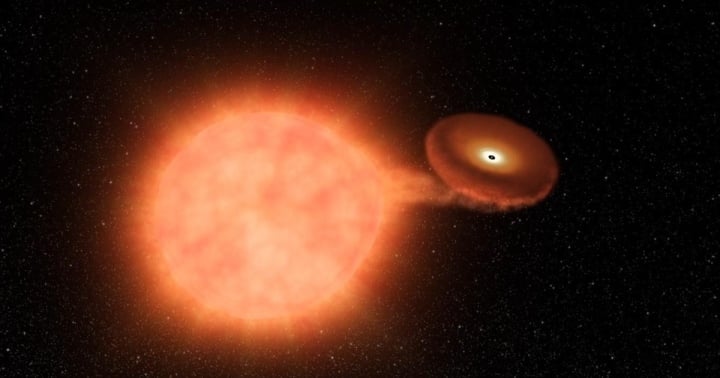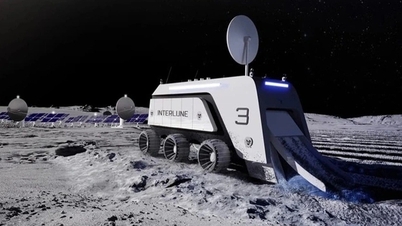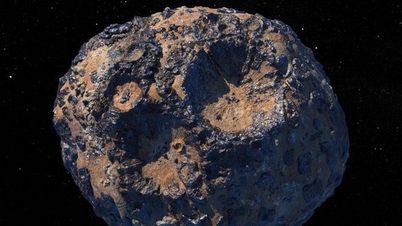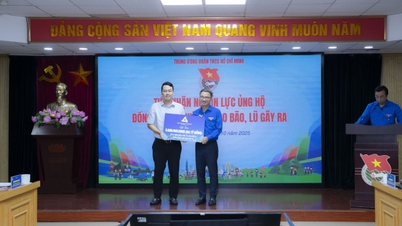According to Science Alert , for the first time, astronomers have detected radio signals of such an event in a galaxy more than 400 million light-years away from Earth. The discovery, published on May 18 in the journal Nature , reveals interesting clues about how the companion star was affected.

Explosion of a white dwarf star. Photo: NASA.
The explosion of a dead star
Accordingly, when stars eight times more massive than the Sun begin to run out of nuclear fuel in their cores, they will shed their outer layers. This process creates colorful gas clouds and leaves behind a hot, dense core called a white dwarf.
The Sun will go through this transition in about 5 billion years, slowly cooling and disappearing. However, if a white dwarf star somehow gains mass, its self-destruct mechanism will kick in when it reaches about 1.4 times the mass of the Sun. Then, a thermonuclear explosion will destroy the star, known as a Type Ia supernova.
But the question is where the extra mass would come from to power such an explosion. Scientists once thought it might be gas escaping from a larger companion star in close orbit. But stars tend to be messy, spilling gas all over the place.
A supernova explosion would shock any overflowing gas and cause it to glow at radio wavelengths. Yet despite decades of searching, no young Type Ia supernovae have been detected by radio telescopes.
As a result, researchers began to think that Type Ia supernovae must be pairs of white dwarfs that rotate inward and merge together in a relatively clean fashion, leaving no shocking gas and no radio signal.

A companion star loses material just before the explosion. Photo: Science Alert.
A rare type of supernova
Supernova 2020eyj was discovered by a telescope in Hawaii on March 23, 2020. For about seven weeks, it behaved like other Type Ia supernovae. But over the next five months, it stopped fading in brightness and began to show features that suggest an unusual increase in helium gas.
Researchers began to suspect that supernova 2020eyj belonged to a rare subclass of Type Ia supernovae.
To try to confirm, they decided to check whether enough gas had been shocked to produce a radio signal. Because the supernova was too far north to be observed by telescopes like the Australia Telescope Compact Array near Narrabri, they had to use a series of radio telescopes spread across the UK to observe the supernova about 20 months after the explosion.
For the first time, they clearly detected a Type Ia supernova that was very young at radio wavelengths. This was further confirmed by a second observation about five months later. This was an important milestone in showing that not all Type Ia supernovae are created by the merger of two white dwarfs.
Whisper of a Dying Star
One of the more remarkable properties of Type Ia supernovae is that they all seem to reach similar peak brightnesses. This is consistent with them all reaching a certain mass before exploding.
It was this property that led astronomer Brian Schmidt and colleagues to their Nobel Prize-winning conclusion in the late 1990s. The conclusion was that the expansion of the universe since the Big Bang is not slowing down under the influence of gravity (as everyone predicted), but is instead accelerating due to effects called dark energy.
That's why Type Ia supernovae are such important cosmic objects, and people still don't know exactly how and when these stellar explosions happen. What makes them so stable is a concern for astronomers.
Besides, if the merging white dwarf pairs have a combined mass three times that of the Sun, why do they release the same amount of energy?
Scientists hypothesize that supernova 2020eyj occurred when enough helium gas escaped from the companion star and was deposited on the white dwarf's surface, pushing it past its mass limit.
The question now, however, is why no one has ever seen this radio signal before in any other Type Ia supernova. The most likely explanation is that patience and persistence sometimes pay off in unexpected ways. In this case, patience helped researchers hear the whispers of a distant dying star.
Source: Zing News
Useful
Emotion
Creative
Unique
Source


![[Photo] Ho Chi Minh City is brilliant with flags and flowers on the eve of the 1st Party Congress, term 2025-2030](https://vphoto.vietnam.vn/thumb/1200x675/vietnam/resource/IMAGE/2025/10/10/1760102923219_ndo_br_thiet-ke-chua-co-ten-43-png.webp)


![[Photo] Opening of the World Cultural Festival in Hanoi](https://vphoto.vietnam.vn/thumb/1200x675/vietnam/resource/IMAGE/2025/10/10/1760113426728_ndo_br_lehoi-khaimac-jpg.webp)

![[Photo] General Secretary attends the parade to celebrate the 80th anniversary of the founding of the Korean Workers' Party](https://vphoto.vietnam.vn/thumb/1200x675/vietnam/resource/IMAGE/2025/10/11/1760150039564_vna-potal-tong-bi-thu-du-le-duyet-binh-ky-niem-80-nam-thanh-lap-dang-lao-dong-trieu-tien-8331994-jpg.webp)






























































































Comment (0)